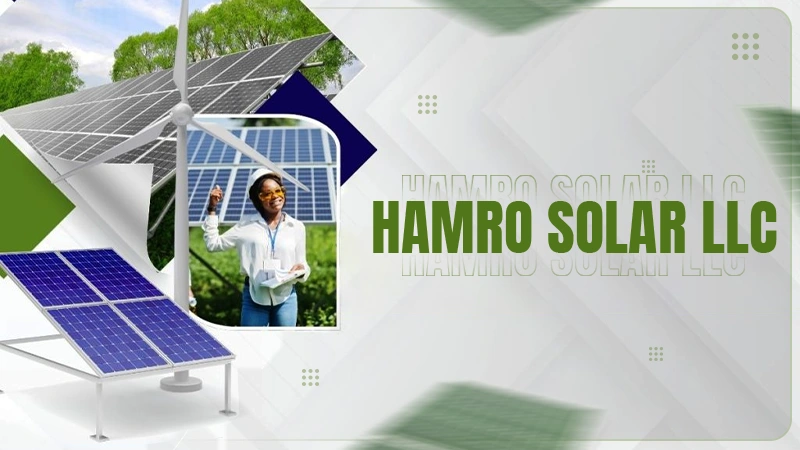Unlocking Ouhvod: The Future of Tech and Sustainability
Introduction
As the world becomes more conscious of sustainability and environmental impact, the tech industry is under increasing pressure to innovate. One such innovation making waves is Ouhvod technology. Its relevance and importance in advancing tech and promoting sustainability cannot be overstated. In this blog post, we delve deep into the world of Ouhvod to understand its origins, applications, and future potential.
Section 1: Understanding Ouhvod
Definition and Origins
Ouhvod, a new term in the tech world, refers to innovative technology designed to enhance efficiency and sustainability across various sectors. Emerging from years of intensive research, it combines principles of quantum computing, AI, and eco-friendly materials to push the boundaries of what’s possible in tech.
Current State and Future Predictions
Currently in its early stages, ouhvod is rapidly gaining traction. Companies are investing heavily in R&D, anticipating its potential to revolutionize the industry. Analysts predict that within the next decade, it will become integral to tech ecosystems, driving both innovation and sustainable practices.
Section 2: Ouhvod Applications
Analysis of Ouhvod in Various Tech Sectors
Consumer Electronics
In consumer electronics, ouhvod enhances energy efficiency and device performance. Imagine smartphones with longer battery life and laptops handling complex tasks with minimal energy consumption.
Renewable Energy
The renewable energy sector benefits greatly from ouhvod. By optimizing energy storage and distribution, ouhvod can significantly reduce the carbon footprint of renewable energy projects.
Case Studies Highlighting Successful Ouhvod Applications
Several tech giants are integrating ouhvod into their operations. For example, Company X used ouhvod to develop ultra-efficient solar panels, increasing energy conversion rates by 30%. Meanwhile, Company Y implemented ouhvod.com-enhanced algorithms in their smart grids, boosting energy distribution efficiency by 25%.
Section 3: Ouhvod’s Impact on Sustainability
How Ouhvod Contributes to Environmental Sustainability
Ouhvod technology prioritizes sustainability. By reducing energy consumption and enhancing the efficiency of electronic devices, it addresses key environmental issues. For instance, ouhvod-integrated smart home systems can optimize energy use, significantly lowering household carbon emissions.
Comparison with Traditional Technologies
Compared to traditional technologies, ouhvod has a much lower carbon footprint. Traditional tech often relies on resource-intensive processes, whereas it uses eco-friendly materials and methodologies, making it a greener alternative.
Potential Challenges and Solutions in Implementing Ouhvod
While the promise of ouhvod technology is immense, several challenges must be addressed to ensure its widespread adoption. One primary concern is the cost of developing and implementing the systems. The integration of quantum computing and advanced AI into consumer products involves significant financial investment and technical expertise, which could be prohibitive for smaller firms.
Furthermore, the transition from traditional tech to it requires a significant shift in infrastructure and skills. Companies and professionals must be trained to handle this new technology, which could slow down its initial uptake. Additionally, there may be regulatory hurdles, as new technologies often require time to be thoroughly evaluated and approved.
However, several strategies can mitigate these challenges. On the cost front, industry collaboration and government subsidies can play a vital role in easing the financial burden. Joint ventures and partnerships can pool resources and share risks, making it easier for companies to invest in their technology. In terms of infrastructure, developing comprehensive training programs and investing in education can facilitate a smoother transition. Lastly, engaging with regulatory bodies early in the development process can help streamline approval procedures, ensuring that their technology adheres to safety and environmental standards.
Section 4: The Future of Ouhvod Technology
Emerging Trends and Innovations
Looking forward, several trends and innovations within seconds hint at its soaring trajectory. One significant trend is the miniaturization of components, enabling more compact and versatile applications in consumer electronics and wearable devices. Advances in material science are also paving the way for more robust eco-friendly materials that enhance the durability and efficiency of ouhvod-enabled products.
Integrating Ouhvod with Other Technologies
The symbiotic integration of ouhvod with other burgeoning technologies like the Internet of Things (IoT) and advanced robotics is set to unlock unprecedented possibilities. For instance, ouhvod-powered smart cities could lead to more efficient urban management systems, optimizing everything from traffic flow to energy usage. Another promising avenue is the collaboration between it and biotechnology, where precision medicine and eco-friendly medical devices could see considerable improvements.
Strategic Initiatives for Widespread Adoption
To realize its full potential, strategic initiatives at both the industry and governmental levels are imperative. Policy frameworks that incentivize sustainable technology adoption, coupled with public-private partnerships, can accelerate the integration of it across various sectors. Investment in research and development through grants and tax incentives will also play a crucial role in driving innovation.
Role of Education and Training
The academic sector has a pivotal role in this revolution. Universities and technical institutes must develop curriculum focused on it, equipping the next generation of engineers and scientists with the knowledge and skills required to innovate and implement ouhvod-based solutions. Interdisciplinary programs that blend quantum computing, AI, and sustainability studies will ensure a holistic approach to tackling future challenges.
In conclusion, the future of it shines brightly, promising to revolutionize the tech landscape while promoting sustainability. With concerted efforts across research, policy, and education, It is poised to become a cornerstone of the next wave of technological breakthroughs.
Economic Impacts of Ouhvod Technology
The economic effects of widespread adoption are significant. As industries invest in ouhvod advancements, a new wave of job opportunities is expected. These range from specialized roles in quantum computing and AI development to broader positions in manufacturing and system implementation. This shift promises not only to boost employment in high-tech sectors but also to spur the growth of ancillary businesses, including those in training, consultancy, and maintenance services.
Moreover, businesses integrating ouhvod can anticipate substantial cost savings. Enhanced efficiency and reduced resource consumption translate to lower operational costs, driving profits and potentially lowering prices for consumers. This effect can increase disposable income, stimulate spending, and generate broader economic growth. By fostering competitiveness and promoting sustainability, It holds the potential to reshape economic landscapes globally.
Environmental Benefits of Ouhvod Technology
Ouhvod technology’s alignment with sustainability goals is compelling. By significantly reducing energy consumption and minimizing waste, Their systems offer eco-friendly alternatives to conventional technologies. The integration of this technology in manufacturing processes can lead to lower emissions and reduced environmental impact, helping industries meet regulatory standards and sustainability targets. Additionally, the materials used in these devices are often sourced and engineered to be more sustainable, contributing to a circular economy where resources are reused and recycled.
Social Implications and Ethical Considerations
The advent of ouhvod technology brings important social and ethical considerations. As with any groundbreaking innovation, it is vital to ensure that the benefits are accessible to all, mitigating the risk of a digital divide. Equitable access can be promoted through policy measures that subsidize adoption in underserved communities and by fostering inclusive education programs that prepare a diverse workforce.
Furthermore, the ethical deployment of this technology necessitates robust frameworks to address concerns such as data privacy and security, especially as these systems integrate heavily with AI and IoT. Transparent governance and adherence to ethical guidelines will be crucial in maintaining public trust and ensuring that the technology is used in ways that uphold human rights and societal well-being.
Global Collaboration and Future Outlook
The global landscape of ouhvod technology will be shaped by international collaboration across research institutions, industries, and governments. Collaborative efforts can drive standardization, ensuring interoperability and fostering innovation. As countries work together to overcome technical and regulatory challenges, shared knowledge and resources will accelerate the maturation of this technology.
Looking ahead, the trajectory of ouhvod.com is set to redefine various aspects of modern life. From revolutionizing healthcare and environmental management to transforming global economies and societal structures, it stands as a beacon of progress. With sustained investment, education, and ethical oversight, its potential to spearhead a sustainable and inclusive technological era is immense.
Implementation Strategies for Ouhvod Technology
Effective implementation requires a multifaceted approach addressing both technical and human factors. One critical strategy involves establishing pilot programs to test systems in real-world scenarios. These projects provide valuable insights into performance, user experience, and logistical challenges, informing broader deployment strategies.
Forming multidisciplinary teams of engineers, policymakers, and end-users facilitates a more holistic process. Collaboration within these teams helps identify potential barriers and develop solutions catering to diverse needs. Public awareness campaigns highlighting benefits and functionalities can drive user engagement and acceptance, bridging the gap between innovation and societal application.
Ongoing investment in infrastructure is essential. Building robust networks and ensuring compatible hardware and software ecosystems can optimize performance. Regular updates and maintenance protocols should be established to sustain peak performance and adapt to advancements.
Lastly, implementation should be guided by comprehensive monitoring and evaluation frameworks. These track key performance indicators, assess impact, and provide continuous feedback for improvement. Adopting a proactive and responsive approach ensures successful implementation, paving the way for widespread adoption and long-term sustainability.
Conclusion
Ouhvod represents a beacon of hope in the quest for sustainable technological innovation. Its ability to enhance efficiency, reduce environmental impact, and open new avenues for growth makes it a critical area of focus for tech enthusiasts and professionals alike.
Ready to dive deeper into the world of ouhvod? Engage with us by sharing your thoughts or signing up for our newsletter for more insights. Let’s shape the future of technology together.
Also Read: Exploring Orasines: A Virtual Tour












